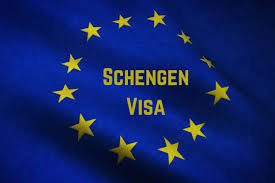
In 2025, the Schengen visa system has undergone significant reforms that travelers should understand before planning any trips to Europe. The Schengen visa allows non-EU citizens to travel freely across 27 European countries for up to 90 days within a 180-day period. It covers travel for tourism, business, family visits, short-term study, and cultural events.
Although the core 27 Schengen countries remain the same, Bulgaria and Romania now partially apply Schengen rules, meaning Schengen visa holders can enter them only by air or sea. Cyprus is expected to fully adopt Schengen rules by the end of 2025, but for now, land entry with a Schengen visa is not allowed. Ireland, Kosovo, Turkey, and land entry into Cyprus are not covered by the Schengen visa.
Several important changes have taken effect in 2025. Traditional paper visas are being replaced by a secure digital version. All applicants are now required to provide biometric data, including fingerprints and facial scans. Health insurance with coverage of €30,000 for short stays and €50,000 for long stays is mandatory. Applicants must also show higher financial means, typically between €50 to €75 per day of stay, depending on the destination country.
Frequent travelers now have access to a streamlined process for multiple-entry visas. Those with a strong travel history can qualify for one-year, three-year, or five-year multiple-entry visas. First-time applicants face stricter scrutiny and must provide strong documentation and evidence of travel intent.
There are several types of Schengen visas, each with specific eligibility criteria. The Type C short-stay visa covers tourism, business, family visits, and other similar purposes. Requirements include proof of financial means, valid travel insurance, confirmed accommodation, and a return or onward travel ticket. Subcategories include visas for tourists, business travelers, family visits, medical treatment, and participation in cultural, religious, or sporting events. For airport transit, a Type A visa is required, while the Type B visa allows short stays during transit.
The Type D long-stay visa is for individuals staying longer than 90 days for study, work, or family reunification. This visa typically leads to a residence permit. Applicants must provide purpose-specific documents such as a university admission letter or a job contract, show proof of sufficient funds (ranging from €1,200 to €1,800 per month), and obtain comprehensive health insurance.
The Multiple-Entry Visa is designed for travelers who frequently visit the Schengen Area. To qualify for a one-year multiple-entry visa, applicants must have completed at least three short-term visits within two years. A three-year visa requires two previously issued one-year multiple-entry visas, and a five-year visa is granted to those with a consistent travel history and no visa violations.
Transit visas are issued for travelers passing through the Schengen Area en route to a third country. The Type A visa applies to airport-only transit, while the Type B visa allows a short stay during transit. Eligibility requires a valid visa for the final destination, proof of onward travel, and documentation such as travel insurance and accommodation if leaving the airport.
Special purpose visas are also available for specific needs. These include the Working Holiday Visa for young travelers, requiring proof of funds and a return ticket, and the Seasonal Work Visa for short-term employment, which needs a valid job offer and accommodation. Other specialized visas cover diplomatic travel, religious missions, volunteering, and participation in cultural or sports activities.
Understanding these updates is essential for a successful visa application and a smooth journey to Europe in 2025.


















